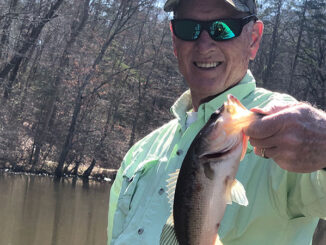
When is a spotted bass not a spotted bass?
Apparently, when it lives in Lake Norman.
Almost from the moment the first spotted bass was caught from Lake Norman around 20 years ago — it is assumed they were brought by bass fishermen from other lakes in the southeast and released in Norman — the chunky cousin of the largemouth bass has been referred to as a spotted bass.
Since 2008, we’ve all been wrong.
That was when biologists were able to definitively rule that the strain of spotted bass living in Norman and many drainages in South Carolina, Georgia and Alabama, are actually a different species from the spotted bass living in Tennessee and Kentucky drainages.
Native to the Coosa River in northwest Georgia and eastern Alabama, the fish swimming in Lake Norman have been renamed the “Alabama bass” — micropterus henshalli, in toxonomic terms. The traditional “Kentucky spotted bass” remain as “spotted bass” — micropterus punctulatus.
That doesn’t mean much to fishermen, however, most of whom are just glad to have them in Norman, no matter how they got there. According to research by biologists from the N.C. Wildlife Resources Commission and Duke Energy, Alabama bass are outcompeting and displacing largemouth bass — aka micropterus salmoides — in most of the 32,500-acre lake. Only in the upper fourth of the lake are largemouths holding their own.
“Alabama bass will inhabit deeper water; they act like spots,” said Lawrence Dorsey of Albemarle, a fisheries biologist with the Commission. “They’re more mobile than largemouth, more of an open-water fish. They’re very adaptable.”
The number of spotted bass in Lake Norman has been increasing consistently since the early 2000s when they were first picked up in electroshocking surveys; at the same time, the number of largemouths has fallen precipitously. However, the average length and weight of largemouths has increased.
“You’re going to catch more spots than largemouths,” said college bass pro Carson Orellana or Mooresville. “In the winter, you’ll see more tournaments won with spotted bass, but it’s usually a mixed bag. You fish for spotted bass all day and hope you catch a couple of big largemouths. Spotted bass will be schooling on the shad on the main lake if the water temperature gets down to 53 or 54 degrees.
“Spotted bass have saved this lake.”







Be the first to comment